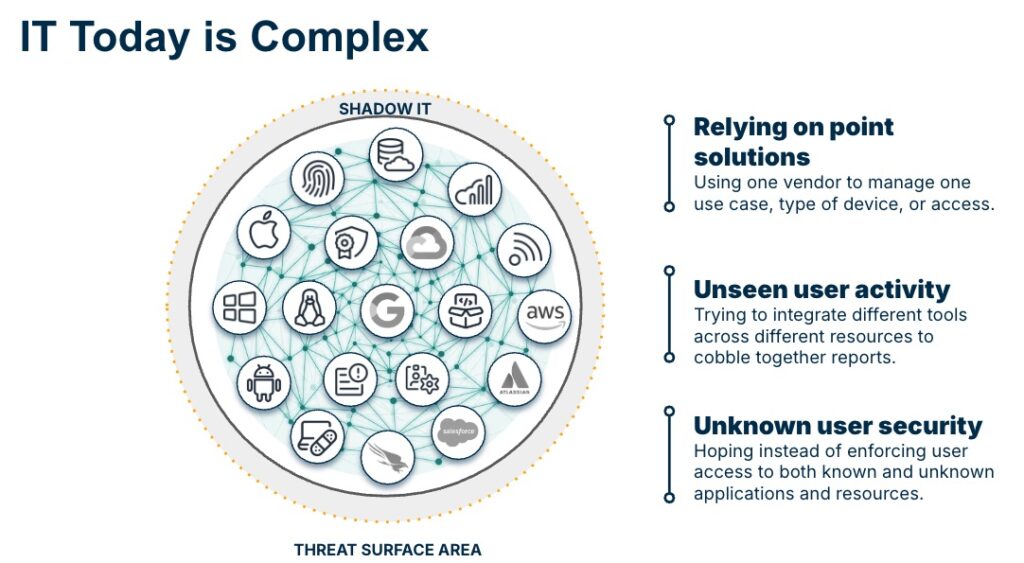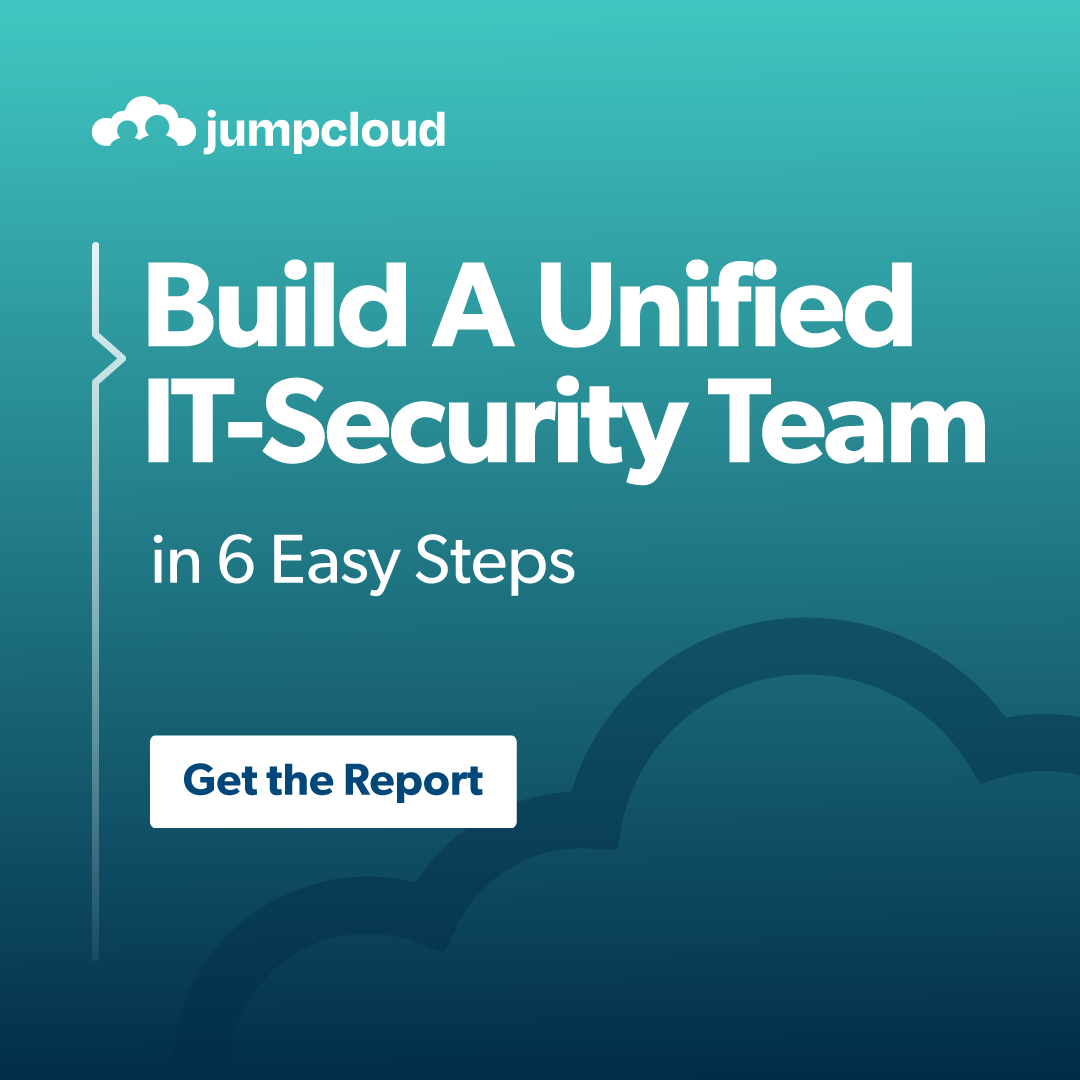Navigating the world of IT today feels less like mapping a clear path and more like finding your way through a maze.
Despite advancements in the tools at your disposal, critical gaps remain. Relying on many point solutions can make your systems feel disconnected instead of cohesive. You put in a lot of effort to make everything fit. But not all systems work well with your tech stack. This leads to frustrating inefficiencies.
Three key challenges stand in the way of progress: vendor sprawl, hidden user activity, and unknown security risks.

These blind spots obscure your vision and prevent you from achieving the clarity and control you need. This article looks at these challenges. We’ll also see how unifying your systems can show you the clear path forward you need.
Tackling the Chaos of Vendor Sprawl
Vendor sprawl complicates IT operations, making management increasingly difficult. Relying on multiple providers for various devices, access methods, and use cases creates silos that disrupt workflows and fragment your systems.
This lack of cohesion makes daily management harder. It slows decision-making and weakens efforts to create a unified IT strategy. Each platform has its own interface and limits. They also have a steep learning curve. This means you need a lot of training on different systems. The burden of ongoing maintenance for each individual solution adds to the complexity, draining both time and energy.
It’s hard to see your whole infrastructure when important data spreads across different systems. Accessing information locked in separate vendor platforms takes extra time and effort. This makes it harder to manage users, devices, or your overall security posture effectively.
The risks don’t end there.
More vendors mean more vulnerabilities. Each new tool can create security gaps and risks of misconfiguration. This expands the attack surface and raises the chance of expensive security breaches.
Over time, not integrating leads to inefficiencies, security risks, and missed chances to improve your IT operations. A streamlined, unified approach is essential to overcoming these challenges and achieving operational excellence..
The Threat of Unseen User Activity
Unseen user activity is a natural occurrence. It includes the actions users take across different platforms and tools that are hard to track or measure. This might include users accessing SaaS apps they acquired and onboarded on their own. Or in a more nuanced example, seeing which buttons they are pushing and what reports they are pulling within sanctioned ones.
Without a unified view of user behavior, gaining meaningful insights becomes an uphill battle. Small data gaps quickly add up, leaving you struggling to connect the dots. For many organizations, combining data from different systems to create unified reports seems like a distant dream rather than a practical goal.
This lack of visibility triggers a ripple effect. It creates inefficiencies. Troubleshooting takes longer. Optimizing resources, like finding unused software licenses, turns into guesswork. Also, managing your IT environment becomes very hard.
From a security perspective, the consequences are even more critical. Lack of clear insights makes it tough to spot insider threats. It also complicates finding anomalies that might indicate breaches. Plus, it’s harder to revoke access when employees leave. In short, the absence of unified data impacts not just efficiency, but security too.
You Can’t Secure What You Can’t See
Effective security hinges on control. Yet, in practice, this goal often devolves into a fragmented patchwork of inconsistent controls and blind spots. When technical safeguards fall short, organizations are left relying on little more than hope—trusting employees to consistently make smart choices on their own.
You may offer training and support, but as your organization grows, adopts new tools, and becomes more distributed, maintaining these efforts becomes increasingly unmanageable. This leads to widening security gaps, turning access management into an uphill battle.
As a result, your organization is left exposed to escalating—but avoidable—risks.
At its core, the issue is clear: fragmented systems and the absence of a unified strategy are complicating your security posture. They are leaving your IT environment dangerously vulnerable. Every new tool or platform brings its own access rules, authentication protocols, and audit logs. This scattered approach obscures visibility, making it nearly impossible to enforce consistent policies, detect lateral threat movement, or securely de-provision access when roles change or employees leave.
Without a central control system, you stay in a reactive loop. You keep reacting to threats like a game of whack-a-mole. This reactive approach puts your key assets at risk from inside and outside threats. It stops you from having real proactive security.
How Unification Creates A Clear Path Forward
Now, consider the alternative. Investing in a unified platform for managing devices, identities, and access offers a compelling path forward. This consolidation of tools and processes simplify IT management, breaking down silos and providing a much-needed central point of control.
But the benefits don’t stop there. By making automation a core component of this unified platform, IT teams can finally break free from the shackles of routine, time-consuming tasks. Imagine your skilled IT professionals being liberated to focus on strategic initiatives, innovation, and driving real business value instead of endless password resets and user provisioning.
The message is clear: in today’s dynamic IT landscape, a unified and automated approach isn’t just a nice-to-have – it’s the key to navigating the maze and achieving true IT efficiency and control.
Automate Your Way to More Impactful IT
Our webinar, “6 IT Automations to Help You Boost your Bandwidth” offers practical strategies for replacing those time-consuming manual processes with intelligent, productivity-boosting automations. Discover how to free your team’s time and brainpower for higher-value projects.
Want to experience this transformation for yourself? JumpCloud’s unified platform for identity, access, and device management is built precisely for this. See how easy it is to simplify complex IT operations with comprehensive automation.It’s time to elevate your IT. Start your free JumpCloud trial today!




